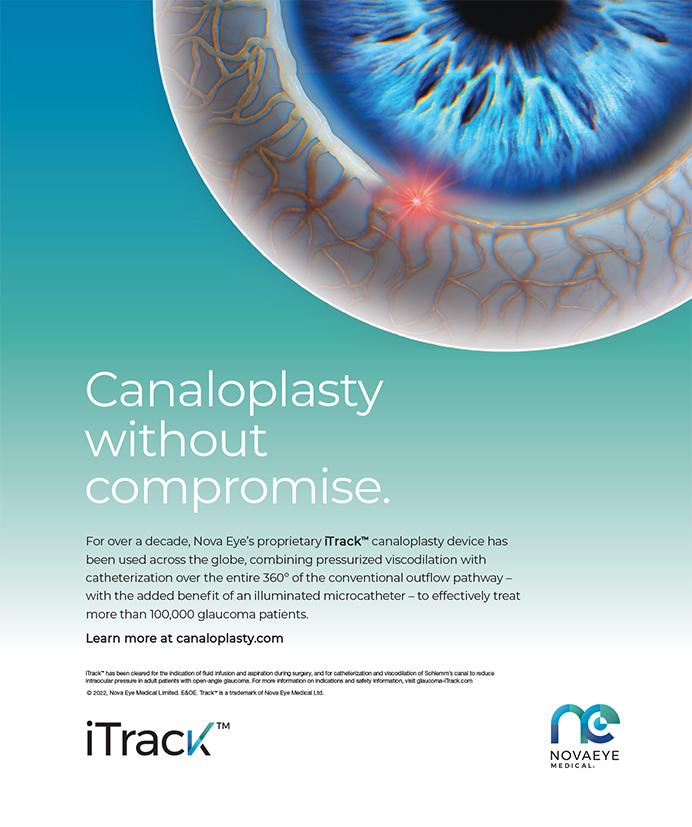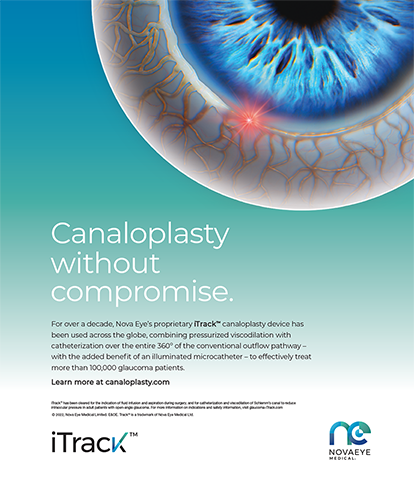After being in practice for more than 20 years and building a strong cataract practice, why would I want to jump into the corneal refractive arena? Several forces led me to move in this direction.
IOL technology has improved significantly over the years. Today’s lenses provide patients with a greater chance not only of improved vision, but also of more spectacle freedom. Although I have a strong record of achieving the desired refractive goal, occasionally, my patients require an enhancement. Most often, the issue is residual astigmatism.
Because all of my patients who choose a premium IOL expect a high level of spectacle freedom, I encourage them to undergo a refractive enhancement if trial glasses demonstrate that treatment would significantly improve their vision. The enhancement may be accomplished through an IOL exchange, piggyback IOL, limbal relaxing incision(s), or laser refractive procedure. Although an IOL exchange and a piggyback IOL work quite well for purely spherical adjustments, they do not address residual astigmatism. For a number of my patients, therefore, laser refractive surgery is the best and most precise option.
I could persuade a colleague skilled in laser refractive procedures to perform enhancements on such patients for a discounted reimbursement once or twice. In time, however, he or she would become less excited to grant this request. These patients are some of the most difficult to manage. They are already dissatisfied with their initial results, and they are not happy that they need to see another doctor to perform a procedure that I could not. I decided it was time to learn how to perform laser refractive enhancements.
INCREASED DEMAND, DECREASED REIMBURSEMENT
As I began offering refractive enhancements, more and more patients started asking me if I could perform primary laser refractive surgery on their family members. At the same time, I was experiencing ever-decreasing reimbursements and growing regulations for insured services. As a result, any procedure paid for without insurance was becoming more attractive. I opted to begin performing primary laser refractive procedures in addition to my cataract and laser enhancement procedures.
WHICH LASER?
After evaluating the available excimer laser platforms, I came to favor a wavefront-optimized procedure. I found it did not induce aberrations that might worsen the quality of vision of patients who had received a multifocal IOL. Additionally, wavefront analysis is typically unreliable for eyes that have one of these lenses, which can make a wavefront-guided ablation unattainable or, at best, unreliable. Because I primarily think like a cataract surgeon, I am acutely aware that many patients who undergo primary LASIK eventually require cataract surgery. I therefore prefer not to correct their lensbased aberrations with a wavefrontguided LASIK procedure, because these patients’ eventual cataract surgery will reintroduce those aberrations. Instead, I favor a wavefrontoptimized treatment, which will not correct for aberrations specifically related to the crystalline lens.
Becoming certified on the Allegretto Wave Eye-Q excimer laser (Alcon Laboratories, Inc., Fort Worth, TX) was simple and straightforward. Now, both my patients and I feel better about my ability to enhance their refractive result without having to involve other physicians. Although I began with PRK, in time, I became certified to use the IntraLase FS laser (Abbott Medical Optics Inc., Santa Ana, CA) and was soon able to offer LASIK to my patients.
CONCLUSION
Although laser refractive surgery is still not the primary focus of my practice, adding it to my arsenal of procedures has allowed me to manage my cataract and premium IOL patients better. Plus, I can provide primary laser vision correction to those patients in my practice who wish to reduce their dependence on glasses. Now, I can offer my patients a full portfolio of refractive options, including LASIK, PRK, phakic IOLs, refractive lens exchange, and customized cataract surgery with presbyopia-correcting or toric IOLs.
Robert J. Cionni MD, is the medical director of The Eye Institute of Utah in Salt Lake City, and he is an adjunct clinical professor at the Moran Eye Center of the University of Utah in Salt Lake City. He is a consultant to Alcon Laboratories, Inc. Dr. Cionni may be reached at (801) 266-2283.


